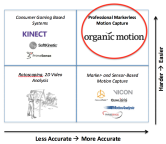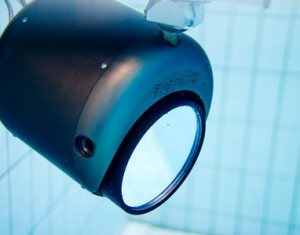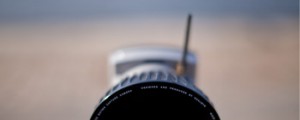As wonderful as it is that sensors are used for things we want and love, but in today’s time they’re also used for things we hate like traffic violations. Now whenever you pull up to a light you’ll think twice about trying to beat the light, or you can’t use the excuse the light was yellow, because now states are enforcing the use of sensors in the cameras at traffic lights. Pretty much the sensors are used to detect when a vehicle reaches the light. and or runs the light, or just doesn’t stop at all. Sensors are also used to detect heavy traffic to speed up the time change between lights (awesome). Laser technology is one of the ways the sensors interact with the physical world. In physical computing class we learned about input and out putting of information into the physical world. An inductive loop is a coil of wire set in the road. A traffic light sensor uses the loop that it constantly tests the inductance of the loop in the road, and when the inductance rises, it knows there is a car waiting.
The induction loop /sensor trigger the service controller to activate the camera. At which point the red light is crossed the controller signals the camera / actuator with a delay to take the picture. Then the controller calculates day time speed in relation to the red light being run. Which is the stored in the computer’s memory.
The central Crash box houses the computer that behaves as an actuator for the red light cameras. You see in physical computing lingo, when the computer receives input from the physical world, in this case that would be from traffic lights, and triggers (sensors) it then signals the cameras to activate. Then the controllers for the camera record the information then send it back to the computer where it’s then outputted to traffic Authorities. Or in some cases there might be an officer present (but hiding) on the scene to address your violation. In thinking of the future, new technology would allow for more accuracy and convictions for red light offenses. A new technology that I impose that can improve upon the current system would be the addition of motion capture.
 Motion capture is a system by which they use video cameras, body suit with sensors on it to capture motion in real time and or 3D. The next phase in motion capture is “Organic Motion Capture” which is the ability to capture the movements just as normal motion capture but without the use and need for sensors, suits, or markers. This feat is accomplished by the use of new high speed cameras and visual software (Auto-desk Motion Builder). In addition to the ability to detect marker positions in real time with high accuracy, the Oqus cameras are the only motion capture cameras on the market with the ability to also record high-speed, high-resolution video.
Motion capture is a system by which they use video cameras, body suit with sensors on it to capture motion in real time and or 3D. The next phase in motion capture is “Organic Motion Capture” which is the ability to capture the movements just as normal motion capture but without the use and need for sensors, suits, or markers. This feat is accomplished by the use of new high speed cameras and visual software (Auto-desk Motion Builder). In addition to the ability to detect marker positions in real time with high accuracy, the Oqus cameras are the only motion capture cameras on the market with the ability to also record high-speed, high-resolution video.  This dual functionality together with active filtering for outdoor measurements places the Oqus in a unique position in the motion capture market.This new technology allows for more spontaneity and realism to otherwise rehearsed skits.
This dual functionality together with active filtering for outdoor measurements places the Oqus in a unique position in the motion capture market.This new technology allows for more spontaneity and realism to otherwise rehearsed skits.
 How this would connect with the red light district is by capturing the speed, breaking distance, accidents caused in that area in real time. A sensor can be placed on the license plate of a vehicle and information such as position,n speed and distance will be recorded with out question. I’m also proposing that with the use of these hyper sensitive cameras we will be able to even to view inside to see who was driving the vehicle, therefore increasing the potential of traffic violation convictions. Also another use for this technology, for example can be used on England’s iron grid. England institute a system of security cameras all over as to decrease the potential for crime in the areas, by adding the motion capture to it, I believe it will be able to alert authorities while infractions occur.
How this would connect with the red light district is by capturing the speed, breaking distance, accidents caused in that area in real time. A sensor can be placed on the license plate of a vehicle and information such as position,n speed and distance will be recorded with out question. I’m also proposing that with the use of these hyper sensitive cameras we will be able to even to view inside to see who was driving the vehicle, therefore increasing the potential of traffic violation convictions. Also another use for this technology, for example can be used on England’s iron grid. England institute a system of security cameras all over as to decrease the potential for crime in the areas, by adding the motion capture to it, I believe it will be able to alert authorities while infractions occur.
-
- Fully compatible with Oqus High Speed Video camera
- Correlation tracker
- 5 tracking points in one session
- Automatic and manual tracking event settings
- Import of image AVI, TIFF, MPEG, JPEG and others
- Diagram Word export
- Dynamic, static and manually scaling
- Visualizing of grid system/division and scale of image
- X/Y and X/T diagram, full interactivity
- Free choice of table parameters, full interactivity
Efficient video analysis
The high speed video image can now be evaluated both visually – by watching the sequence in slow-motion – as well as analytically, by means of QVA.
Input Data
QVA’s standard input files are digital image sequences. A large number of digital formats can be read directly during tracking: AVI, TIFF, BMP, JPEG, MPEG2 and many others. QVA imports several different standard data formats like tsv and ASCII. The imported data is available for all parts of the program and can be used in calculations, graphs and tables.
Tracking
QVA uses an optimal method for tracking each frame by using fixed cameras. The basic tracking function operates in two dimensions and produces 2D pixel coordinates for each tracked target in each image. The tracking can be performed in a number of different modes: “Manual”, “Semi Automatic” or “Automatic”. In the automatic mode, the operator sets a tracker tolerance specifying how much variation in the target features that should be tolerated. As requirements for tracking a defined target are often user-specific, there are a number of different tracking algorithms available: Correlation, Quadrant, Circular, Center of gravity and Virtual points.
Presentation
One of the great advantages using the QVA system, is the possibility to present data and results in customized graphs and tables. It is easy to add comments, special graphics as well as to customize the appearance of a certain view. The main tools for presentations are 2D diagrams, diagrams in which data can be plotted against time or other values. All data, whether tracking data, or data inputted separately, can be plotted in single or multi axis X/T or Y/X plots with numerous options to customize.





